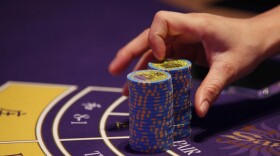This is a busy week for news from the moon. This weekend will bring a lunar eclipse — and China has been conducting experiments on the far side of the moon. Not all of those experiments have been successful.
China has sent some flurries of headlines from the moon this week.
First was the news that seeds had sprouted on the moon for the very first time.
They were cotton seeds — carried to the moon’s surface in a specially sealed container — aboard the Chinese lunar landing craft that touched down on the far side of the moon earlier this month.
On Tuesday, China’s state-run news agency said the seeds germinated. And Astronomy News headlined that “Nearly 40 years after the last human left the lunar surface, the moon is no longer devoid of life.”
But in this case, life didn’t linger.
Late yesterday, the state-run news agency quoted the designer of the experiment as saying “life in the canister would not survive the lunar night.”
It just got too cold – about 62 degrees below zero on the Fahrenheit scale.
That canister by the way is a pretty elaborate construction. It’s about seven inches in size, with a capacity of about a liter — holding soil, water, seeds of cotton, potato and a few other items including yeast and fruit fly eggs.

Scientists have called it a “moon surface micro-ecological circle”….while journalists have tended to favor phrases like a “lunar mini-biosphere.”
Chinese media put the cost of the canister at about 1.5 million dollars.
We expect to hear more soon on how other experiments are going on board the landing craft.




